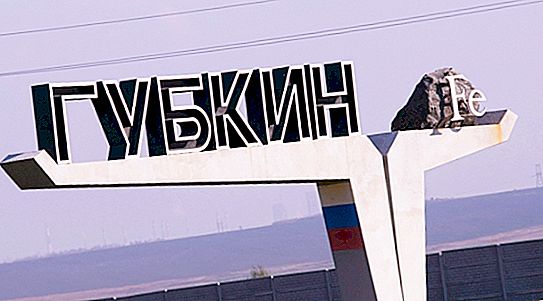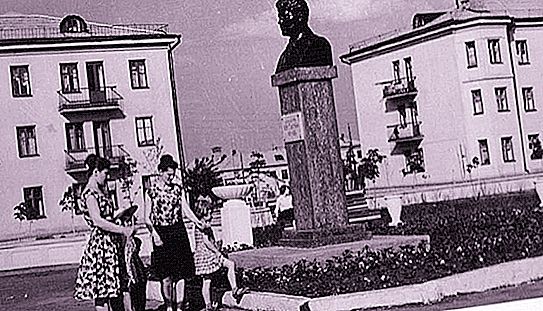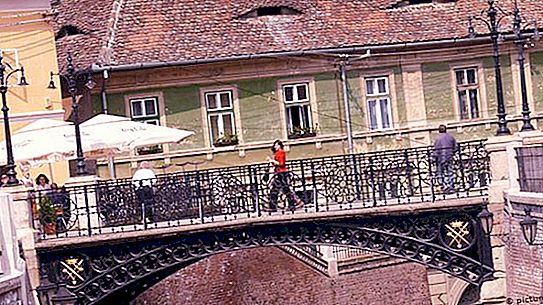The history of a small city in the Belgorod region is inextricably linked with the extraction of iron ore in the territory of the Kursk magnetic anomaly. In the next 250 years, Gubkin has a very clear future: the reserves of local deposits will be enough to work for such a time. Unless a miracle happens and humanity completely abandons the use of iron.
general information
One of the most comfortable cities in Russia is located on two banks of the Oskolets River. Located in the north-eastern part of the Belgorod region. The distance to the nearest city is 20 km, and 116 km to the regional center. You can get to Gubkin by rail via the Stary Oskol - Rzhava line. The city covers an area of 1, 526 ha.

Gubkin City Day is celebrated on September 19th. On this day in 1939, a small settlement received the status of a working village and its modern name.
Settlement foundation
In the distant 18th century, the first settlements appeared. The population of Gubkin then consisted of bonded peasants. The Russian Empress Catherine II presented the lands with the inhabitants to General Saburov for his services to the fatherland. A great fan of card games, the general lost part of his land to his neighbor Korobkov, whose estate began the documented history of the territory of modern Gubkin. Subsequently, this territory was called Sretenka, because it was on this church holiday that the village was won.
The first reliable evidence of the presence of iron ore deposits dates back to the 18th century. Then Belgorod merchants opened companies in the province for the extraction of ore in a semi-artisanal way. At that time, it was possible to find only deposits that were on the surface in ravines and gullies washed out by groundwater. Production technologies were primitive, production volumes were very small.
The beginning of the development of the Kursk anomaly

Scientists began to pay special attention to this region when strange behavior of the compass in this area was discovered. The magnetic needle always deviated from its normal position. Since that time, scientists from many countries of the world have tried to explain the mystery of the Kursk magnetic anomaly. Already during the Soviet era, they started practical research of local deposits. Exploration work began in 1924, and in September, the richest mineral deposits were discovered at a depth of 116.3 meters with a high concentration of iron, over 50 percent.
The modern history of the city began with the beginning of exploration under the guidance of the famous geologist Ivan Mikhailovich Gubkin, in the place of the village of Saltykovo (now it is an urban microdistrict). In September 1931, the construction of an exploration and development mine began, and a village for geologists was built nearby. In 1939, 400 people lived in the workers' village of Gubkin. Further development was suspended by the outbreak of war.
The second half of the 20th century

With the outbreak of war, a significant part of the inhabitants (1, 900 people) voluntarily went to the front, and mine equipment and specialists were evacuated inland. During the seven months of occupation, the workers' settlement was almost completely destroyed, from the region about 2000 young people were driven to forced labor in Germany. After the liberation of the village there was virtually no, the buildings were destroyed, the mine was flooded.
After the restoration of the mine, in the 50s began the widespread development of huge iron ore deposits of the Kursk anomaly. In 1953, on the basis of a mine and two concentration plants, the first ore mining and concentration enterprise in the region was organized - the KMAruda plant. The expansion of production volumes required the creation of new jobs. Specialists from all regions of the country were recruited to work at the enterprise. As a result, the working village has grown to a small mining town. In December 1955, Gubkin of the Belgorod Region was given the status of a city of regional subordination.
Development of the Lebedinsky deposit

In 1956, one of the largest deposits in the world was discovered. In 1959, the construction of the Lebedinsky mine began, where iron ore was mined for the first time in the country. The construction of the mine was announced by the All-Union Komsomol construction site, more than 5, 000 Komsomol members came to work in the mining town. As a result, in 1959, the population of Gubkin reached 21, 333 people.
In 1967, construction began on a mining and processing plant with a capacity of 50 million tons of ferruginous quartzite per year on the basis of the Lebedinsky deposit. Gubkin's population has reached 42, 000 inhabitants. In 1972, the first phase of the mining and processing complex was commissioned with a capacity of about 7.5 million tons of ore. In 1970, the city already had 54, 074 inhabitants. In the 80-90s, the city was actively built up, the beautification of the center began, the House of Culture, schools, hospitals, a new residential community of Cranes were built. In 1987, the population of Gubkin was 75, 000 people.




